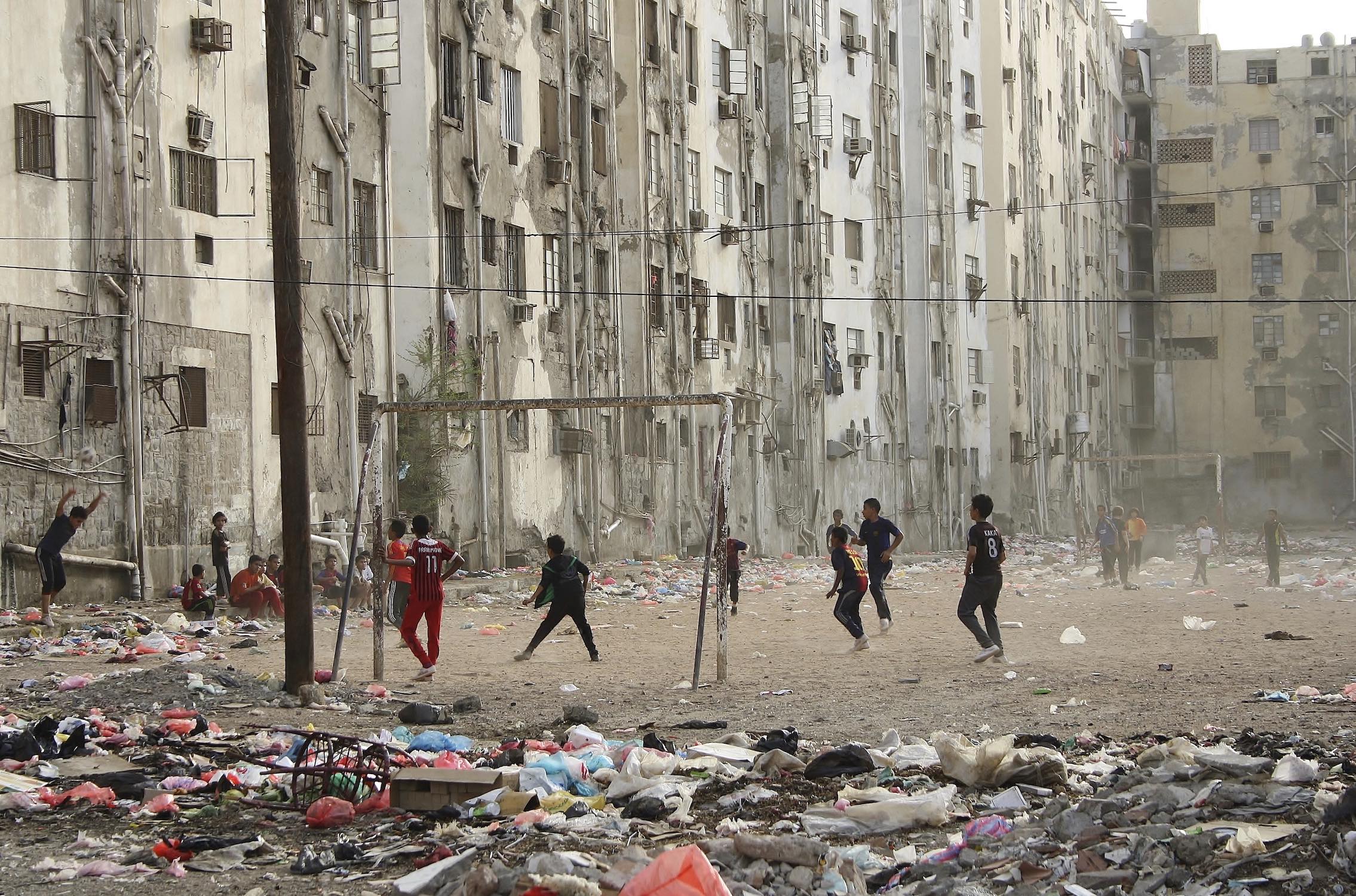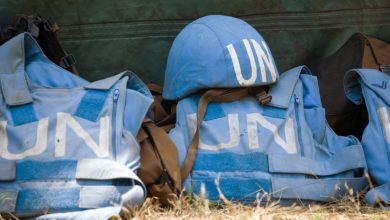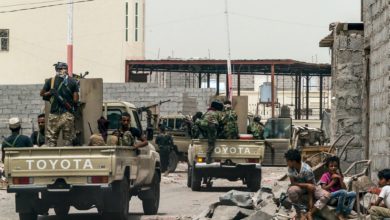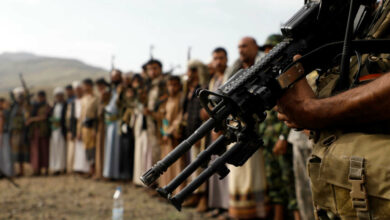Houthis recruit 50,000 Yemen child soldiers in 3 months, minister says
Information minister Moammar Al-Eryani says the Houthis are exploiting vulnerable orphans, girls
A gun, a comic magazine about jihad and qat to chew – for many kids in Yemen, these are integral parts of their childhood. About 50,000 children have been recruited in the past three months by the Houthi rebels to fight in the country’s bloody civil war, with around 10% of them being girls, according to Yemen’s Information Minister Moammar Al-Eryani.
With the difficult economic situation in the country when salaries are mainly being paid only to those willing to fight, families have to find a way to survive.
“Most of the kids go with the consent of their family, some are kidnapped … some are brainwashed,” Al-Eryani said during a media roundtable this week in Washington, D.C.
At the same time, many children have been recruited to the rebel cause from orphanages, he claimed.
According to the United Nations, the situation on the ground in Yemen is getting more violent as the civil war continues into its fifth year.
The total number of children currently fighting for the rebels is unknown, according to Al-Eryani. He said the 50,000 figure was calculated based on “the information received from Sana’a,” but that its source should remain classified.
The Defense Post was unable to independently verify the figures.
Yemen’s children at war
“The conflict is getting worse, not better. Fighting this year has displaced more than 250,000 people,” Under-Secretary-General for Humanitarian Affairs and Emergency Relief Coordinator Mark Lowcock told the U.N. Security Council this week.
“The number of incidents killing or injuring children more than tripled between the last quarter of 2018 and the first quarter of this year.”
There are now more than 30 active front lines in Yemen, and fighting remains consistent. When clashes quieted down in the port city of Hodeidah after the Stockholm Agreement, fighters were redeployed to other areas, including Al Dhale’e, Hajjah and Taiz.
Bismarck Swangin, chief of communication and advocacy at the Yemen division of the U.N. Children’s Fund, told The Defense Post that from March 2015 to April 2019, the U.N. was able to verify recruitment of 3,321 children in Yemen – 3,264 boys and 57 girls.
“This is only what the U.N. was able to verify. The actual numbers are likely to be much, much higher,” Swangin said. “All parties to the conflict in Yemen are recruiting and using children in the war in different capacities.”
According to the 2017 Secretary-General Annual Report on Children and Armed Conflict released in May last year, the U.N. verified 842 cases of the recruitment and use of boys as young as 11 years old in the Yemen conflict. Among those reported cases, nearly two-thirds, or 534, were attributed to the Houthis, 142 cases to the Security Belt Forces, a paramilitary force based in Southern Yemen, and 105 to the Yemeni Armed Forces.
On Tuesday, Reuters reported that U.S. Secretary of State Mike Pompeo had blocked the inclusion of Saudi Arabia on an upcoming State Department list of countries that use child soldiers, despite findings that the Saudi-led coalition fighting the Houthis had enlisted Sudanese children to fight with militias in Yemen.
During the roundtable on Tuesday, Al-Eryani showed journalists what he said were photographs of children armed with guns and rocket-propelled grenade launchers deployed at checkpoints and participating in military drills.
Houthis often give child fighters qat (also spelled khat) – a commonly-used plant that contains the stimulant alkaloid cathinone – to keep them awake at the frontlines, the minister said, while a kids’ magazine about jihad helps with indoctrination.
Al-Eryani also shared a picture of a letter that he said showed a Houthi commander’s request that a school give a student top marks for his exams because he was fighting, and said in some cases, families have been forced to celebrate their child’s martyrdom after receiving the news of their death.
U.N. investigators said in August that they had “received substantial information indicating that the Government of Yemen, the coalition-backed forces and the Houthi-Saleh forces have all conscripted or enlisted children into armed forces or groups and used them to participate actively in hostilities.”
“In most cases, the children were between 11 and 17 years old, but there have been consistent reports of the recruitment or use of children as young as eight years old,” the investigators added.
When asked about the report, Al-Eryani said Yemeni law and institutions criminalize and prohibit child recruitment.
“Always, the military police are doing some kind of inspection to make sure that there are no kids recruited,” he said. “The government will not and cannot allow child soldiers.”
Millions at risk in Yemen
According to a May 2018 special report by the Yemeni embassy in Washington, D.C., Yemen’s children have experienced an “intense and deep trauma” at the hands of the Houthis.
“A transformative change will be needed that is vital to imparting upon them a raison d’être for wanting to live in peace with the world, and not wanting to die in war or to commit crimes or terrorist acts against the United States or other nationalities in the future,” the report said.
“Consequently, and in order to remedy this warped mindset, an immense campaign must be instituted that is dedicated to instilling the rudimentary goodwill and acceptance of others (irrespective of religion, race and nationality) in educational curricula and for their existential development.”
Since the 2015 escalation of conflict in Yemen, nearly half a million children have left school, according to UNICEF. The total number of out-of-school minors reached 2 million in 2018.
“An entire generation of children in Yemen faces a bleak future because of limited or no access to education,” UNICEF Representative in Yemen Meritxell Relaño said last March. “Even those who remain in school are not getting the quality education they need.”
At the moment, about 24 million people in Yemen are in urgent need of protection and assistance, with about 80% of the population being stuck in a “deadly loop” of suffering, war and disease, according to Lowcock. The U.N. has called the situation in Yemen “the world’s worst humanitarian tragedy.”
Despite the dire conditions on the ground, full funding for humanitarian operations in the country is far from being reached.
“This year we require $4.2 billion and have so far received $1.15 billion, or 27%. In February, we heard very generous pledges in Geneva amounting to $2.6 billion,” Lowcock said.
“We thank all our donors for their generosity and understand that this money comes from voluntary contributions. But when pledges are made, they must be fulfilled. It has now been four months since the Geneva conference.”











